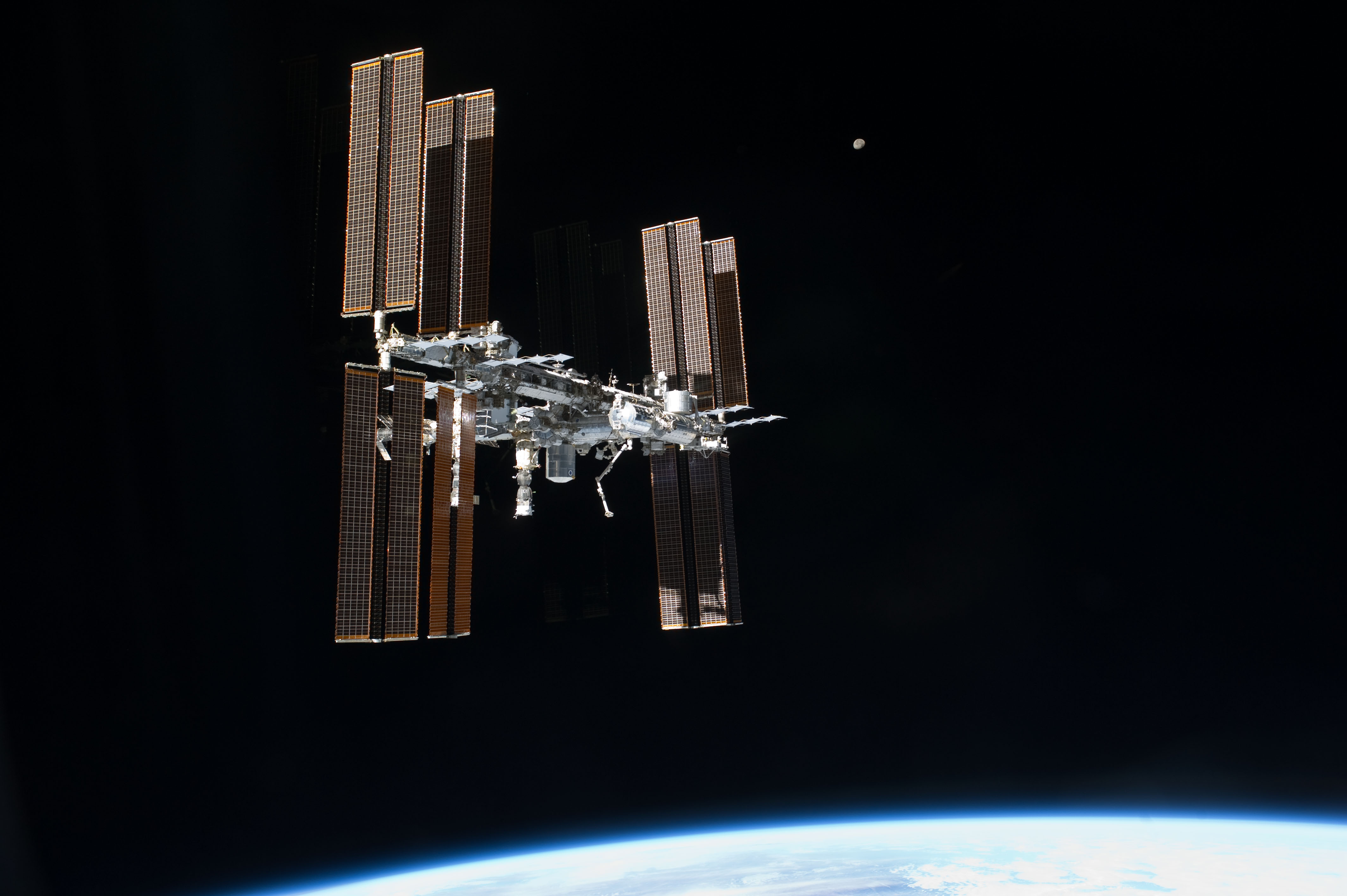
With the announcement yesterday of the appointment of NASA astronaut Tim Kopra and Britain’s Tim Peake to the future crew of Expedition 45/46, the International Space Station (ISS) is set to become even more “international” over the coming few years. In November 2015, Peake and Kopra will launch from the Baikonur Cosmodrome in Kazakhstan aboard Soyuz TMA-19M, together with a Russian crewmate—rumored to be Sergei Zalyotin—for a six-month tour of duty aboard the orbital outpost. Upon arrival at the ISS, the three newcomers will join incumbent Expedition 45 crewmen Scott Kelly, Mikhail Kornienko, and Sergei Volkov, who will be at various stages of their own long-duration missions. It will bring to a close what is expected to be a remarkable year for the ISS as the station fulfils its billing as laying the groundwork for future deep-space exploration.
Although Peake will not be the first Briton to venture into space—that honor belongs to Helen Sharman, who flew an eight-day mission to Russia’s Mir space station in May 1991—he will be the first to officially represent the British government. Chosen as a European Space Agency (ESA) astronaut candidate in May 2009, Peake was of six selectees, which also included representatives of Germany, France, Denmark, and two Italians, including Sam Cristoforetti, who will become Italy’s first female spacefarer. He is a former Royal Army Air Corps major and veteran Apache helicopter test pilot. After four years of intensive training, Peake’s assignment to Expedition 45/46 was announced in May 2013. It makes him the fourth member of his group to receive a mission, but according to the ISS manifest he will be the fifth to actually fly. Italy’s Luca Parmitano is currently aboard the space station, as a member of Expedition 36/37, with Germany’s Alexander Gerst slated to follow in May 2014, Italy’s Cristoforetti in November 2014, and Denmark’s Andreas Mogensen on a short-duration mission in September 2015.
In addition to Helen Sharman, several other British-born astronauts have journeyed into space. Mike Foale, Piers Sellers, and Nick Patrick all flew aboard the shuttle and ISS, but were required to gain U.S. citizenship prior to selection by NASA. All three rode their missions with the Stars and Stripes on the sleeves of their space suits, rather than the Union Jack. Others, including Mark Shuttleworth and Richard Garriott, carried dual nationality, but flew as paying “space tourists.”
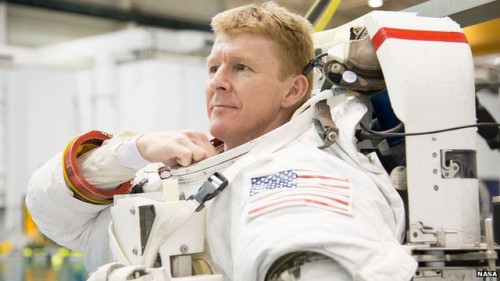
Britain’s lack of a human space program has proven a surprise to many Britons, when one considers that the United Kingdom was only the sixth nation to launch a home-grown satellite. Tiny Prospero was boosted aloft by a British-built Black Arrow rocket from Woomera, South Australia, in October 1971, and although the U.K. has proven a world leader in remote-sensing applications and satellite technology, the Conservative government of Margaret Thatcher in the 1980s gutted any chance of a human space effort. At one stage, hopes were high that Royal Air Force officer Nigel Wood might fly aboard the shuttle in June 1986 to oversee the deployment of the Ministry of Defence’s Skynet 4A communications satellite, but the loss of Challenger ended that possibility.
It came as a disappointment, but not a great surprise, when the ISS Intergovernmental Agreement was signed between the International Partners in January 1998 that Britain did not provide any financial contribution to the station. However, more recently it was reported that Britain’s space industry currently provides around £9 billion ($13.7 billion) to the national economy each year and this provided David Willetts, Minister of State for Universities and Science, with an important leveraging tool to persuade Chancellor George Osborne to offer renewed support for ESA. In November 2012, at ESA’s Ministerial Council Meeting in Naples, Italy, the pan-European organization agreed a budget of 10 billion euros ($12.9 billion) over the next three to five years … of which 1.4 billion euros ($1.8 billion) would originate from Britain.
This contribution made the U.K. one of only three member-states to actually increase its financial commitment to the space program. As well as enabling ESA to press ahead with its plan to build the service module for NASA’s Orion deep-space exploration craft—based upon Automated Transfer Vehicle (ATV) technology—Britain’s investment also included a contribution of 14.6 million euros ($18.9 million) to the European Life and Physical Sciences (ELIPS) program, which has opened the door to actual research aboard the ISS … and to the flight of Tim Peake.
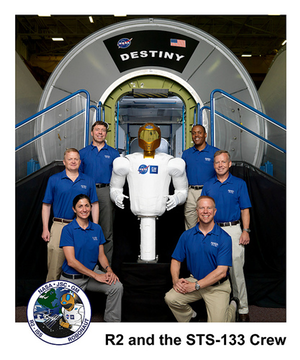
The names of Peake’s Soyuz TMA-19M comrades circulated on various Internet sites throughout the summer, but only now has NASA formally identified Kopra as the U.S. member of the crew. A retired U.S. Army colonel, Kopra was selected by NASA as an astronaut candidate in July 2000 and flew a 58-day mission as part of Expedition 20 in July-September 2009. Shortly after his return to Earth, he was named as a mission specialist on STS-133, originally planned as the shuttle program’s final flight. However, STS-133 jostled position on the manifest with two other missions and eventually wound up as the final voyage of the orbiter Discovery, but not the program’s final flight. Sadly, Kopra would not be aboard STS-133. In January 2011, just five weeks before launch, he suffered a severe bicycle accident and was duly replaced by fellow astronaut Steve Bowen.
With Sergei Zaloytin widely rumored to be in command of Soyuz TMA-19M, the experience base of this crew is expansive, even though the cosmonaut has not ventured into space for more than a decade. Selected for training in 1990, Zaloytin first flew in command of Soyuz TM-30 in April-June 2000, during which he and fellow cosmonaut Aleksandr Kaleri supported the 28th and final expedition to the Mir space station. Zaloytin flew a second time in command of the Soyuz TMA-1 taxi flight to the ISS in October 2002. Subsequently elected as deputy of the Tula provincial Duma (parliament), Zaloytin made a surprise return to the cosmonaut group in January 2011. If he flies Soyuz TMA-19M, it will be his third space mission.
Of course, Soyuz TMA-19M is more than two years into the future. However, it will continue the remarkable and constantly evolving adventure which is the ISS. Already, 2013 has seen Chris Hadfield become the station’s first Canadian commander and Luca Parmitano become the first Italian spacewalker. With last weekend’s successful arrival of the first Cygnus cargo ship, two U.S. companies—SpaceX and Orbital Sciences Corp.—have demonstrated that they can commercially resupply the ISS.
With the ISS currently midway through Expedition 37, commanded by Russian cosmonaut Fyodor Yurchikhin, six spacefarers from three discrete nations are represented aboard the outpost. Fellow Russians Oleg Kotov and Sergei Ryazansky, together with U.S. astronauts Karen Nyberg and Mike Hopkins and Italy’s Luca Parmitano, will remain together as a six-person unit until 7 November, when the Soyuz TMA-11M crew of Russia’s Mikhail Tyurin, NASA’s Rick Mastracchio, and Japan’s Koichi Wakata is due to arrive. This will result in an uncommon “direct handover” of astronauts and cosmonauts and will mark the first time since the end of the shuttle era, back in July 2011, that the station’s population has temporarily soared beyond six people.
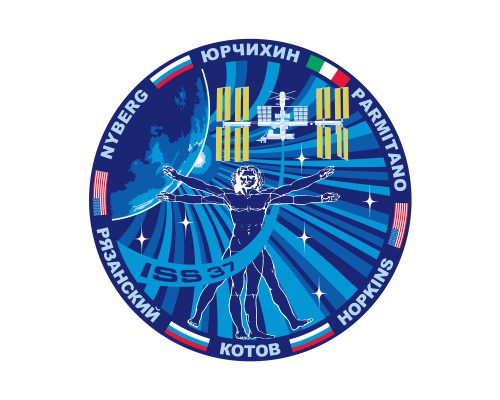
“We have not had a direct handover for a pretty long period of time,” Kotov explained in his pre-launch NASA interview, “so nine people will be working on-board the station at the same time. It requires a lot of co-ordination by the commander of the crew. We need to ensure the safety of the crew and of the station during docking, re-docking and during spacewalks. Imagine a situation when a lot of your relatives arrive at your house. Somebody is unpacking. Somebody is just arriving. Somebody is leaving. Somebody is in the back yard planting something. After this work, we will need a day or two to relax and to understand what happened!”
Normally, ISS crews follow “indirect” handover protocols, whereby a given crew departs the station, reducing the population to three, before a new crew arrives and restores it back up to six. The reason for the direct handover is tied to the fact that Russia plans an EVA by Kotov and Ryazansky on 9 November, whose primary objective is the installation of the UrtheCast high-resolution camera onto the Zvezda module of the Russian Orbital Segment (ROS). However, its most publicly visible objective will involve the spacewalkers carrying an Olympic torch as part of preparations for the Sochi Winter Olympics, which begins in February 2014. “The Olympic torch will be traveling all over Russia,” explained Ryazansky. “They will also take it to the bottom of the deepest lake on Earth, Lake Baikal.”
The torch will launch with the Soyuz TMA-11M crew on 7 November and will then be returned to Earth with Yurchikhin, Nyberg, and Parmitano aboard Soyuz TMA-09M on 11 November. “The idea to take the Olympic torch to space and take it outer space during the spacewalk was an idea voiced by Roscosmos,” said Kotov. “We will take a picture of it with the space station in the background, with the Earth in the background, and we will try to make sure that we see Russia and maybe Sochi, where the Olympic Games will take place. We want them to be in the background.” For Ryazansky, it will be his first EVA and to photograph the Olympic torch with Russia itself forming the backdrop promises to be highly symbolic. He was only 6 years old when his homeland last held the Summer Games, back in 1980. Thirty-four years later, Sochi—on the Black Sea coastline of Russia’s Krasnodar Krai—will host the Winter Games. “The most interesting part,” said Ryazansky, “is that our relatives will be participating in this relay as well. My wife and Oleg Kotov’s daughter on Earth will be participating in the relay.”
In readiness for the temporary presence of three Soyuz craft at the ISS, it is expected that Yurchikhin, Nyberg, and Parmitano will undock their Soyuz TMA-09M craft from the nadir-facing Rassvet module on or around 1 November and redock to the end of the Zvezda module. This latter port will have been vacated by Europe’s ATV-4 “Albert Einstein” cargo craft a few days earlier on 28 October. This will allow Soyuz TMA-11M to dock at Rassvet, after a four-orbit, six-hour “fast rendezvous” on 7 November, whilst Soyuz TMA-10M remains at the zenith-facing Poisk module. This will also mean that Kotov, Ryazansky, and Hopkins will become part of the first ISS crew to remain at full six-person strength throughout its entire expedition.
Commercial and government cargo craft are expected to come and go in the next few months, with Russian Progress supply vehicles due for launch in November and February, together with Orbital’s first dedicated Cygnus mission—known as “ORB-1″—as early as 8/9 December 2013 and SpaceX’s third dedicated Dragon mission (CRS-3) in mid-January 2014. Russia’s Multi-Purpose Laboratory Module (MLM), already delayed well past its scheduled December 2013 launch target, is tentatively planned to fly no earlier than April 2014. “This module will expand the technical capabilities of the station and of the Russian Segment in particular,” said Oleg Kotov. “We will have new scientific hardware there to monitor the Earth. We will have special ovens inside this module where new alloys and new materials will be produced. It will also improve the life-support system of the station. We will have a new water recovery system, an oxygen generation system, one Russian [toilet] will be added, and one of the crew quarters will be moved there. We have an airlock there from which materials will be delivered to the outside of the station. From the crew’s standpoint, we will have a big window there and we will be able to take beautiful photographs of Earth.”
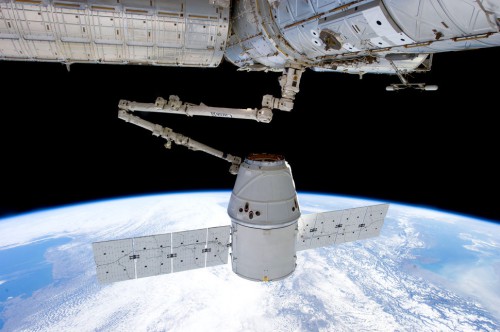
As many as four Dragons, three Cygnuses, a Japanese H-II Transfer Vehicle (HTV) “Kounotori” (“White Stork”), and the last of Europe’s Automated Transfer Vehicles (ATV) are scheduled to rocket toward the ISS in 2014. Numerous spacewalks are planned from the Russian segment, primarily in support of the impending arrival and outfitting of the MLM. International crews will come and go, with Germany’s Alexander Gerst flying in May 2014 and Italy’s Sam Cristoforetti in November. Russia’s fourth female cosmonaut, Yelena Serova, is scheduled to launch in September 2014 for a six-month mission.
And 2015 is expected to be dominated by a planned year-long expedition involving U.S. astronaut Scott Kelly and Russian cosmonaut Mikhail Kornienko. They will launch alongside another Russian cosmonaut—possibly Gennadi Padalka, following the surprise resignation of Yuri Lonchakov—in March. Although their third crewmate will complete a standard six-month tour of duty, his return in October will coincide with the flight of Denmark’s first astronaut, Andreas Mogensen, and possibly English soprano Sarah Brightman. Accompanying Mogensen and Brightman into orbit will be Russian cosmonaut Sergei Volkov, who will remain aboard the ISS with Kelly and Kornienko for the final six months of their expedition. Also expected to fly long-duration expeditions in 2015 are Japan’s Kimiya Yui and Britain’s Tim Peake.
A major relocation of U.S. Orbital Segment (USOS) modules to support future Commercial Crew vehicles is also reportedly scheduled for the summer of 2015. At around the same time as the USOS relocation—which is expected to include the movement of the Permanent Multipurpose Module (PMM) from its current position on the “nadir” (or Earth-facing) port of the Unity node to a new position on the “forward” port of the Tranquility node—SpaceX’s Dragon cargo ship will deliver the Bigelow Expandable Activity Module (BEAM) to the station. According to NASASpaceflight.com, the arrival of BEAM is manifested on the CRS-8 Dragon mission, scheduled for June 2015.
According to Jason Crusan, chief technologist for space operations within the Space Operations Mission Directorate at NASA Headquarters, quoted by Space.com’s Leonard David in a January 2011 article, “We’re talking about a project that would take about 24 months from go-ahead to the module being on-orbit.” Crusan added that BEAM would be “pretty fast-paced” and would be carried into orbit under the auspices of NASA’s 2008 Commercial Resupply Services (CRS) contract. The Space.com article suggested that BEAM would likely be robotically berthed at one of the interfaces of the Tranquility node. As well as providing much-needed logistics and stowage support for the station, BEAM is expected to offer data on the performance of non-rigid space station modules with human occupants for the first time.
Want to keep up-to-date with all things space? Be sure to “Like” AmericaSpace on Facebook and follow us on Twitter: @AmericaSpace




One Comment
One Ping
Pingback:Major Tim and Colonel Tim to Usher in New Era on International Space Station | Today in Space